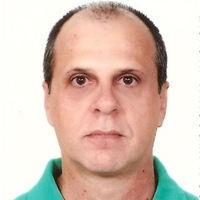Nano-silica from kaolinitic clay used as adsorbent for anionic and cationic dyes removal: linear and non-linear regression isotherms and kinetics studies
Published on: 24th May, 2022
The increasing occurrence of wastewaters associated with industrial development has begotten a permanent search for new and more efficient techniques for the removal of hazardous substances such as heavy metals and dyes. The use of natural and available resources to develop improved and sustainable commodities for this purpose remains crucial and is among promising emerging green technologies for water treatment. It offers the gradual shifting of hazardous industrial chemicals precursors to the abundant non-metallic mineral resources that receive an added value. This work investigated the uptake capacity by the adsorption process of methylene blue (MB) and azocarmine G (AG) onto nano-silica synthesized from kaolinite clay. The effects of contact time (0-30 min), the adsorbent dosage (5-100 mg), the initial pH of the solution (1-11 for MB and 1-7 for AG), and the initial dye concentration (5-50 mg/L) were studied. The selected conditions to carry out kinetic and isotherm adsorption experiments were: 15 mins, 20 mg, 11 for MB, 1.01 for AG, and 50 mg/L. Four adsorption isotherms and three kinetic models were used to model the adsorption data thanks to linear and non-linear regression methods. From the obtained results, the Freundlich isotherm model fitted well the adsorption phenomenon while the pseudo-second-order kinetic model described well the adsorption mechanism. Furthermore, the free energy of adsorption was similar for the two absorbents, 0.71 kJ, pointing physisorption as the dominant adsorption mechanism. The optimum MB and AG uptake were respectively 13.8 and 36.1 mg/g. Conclusively, the nano-silica represents a potentially viable and powerful adsorbent whose use could lead to a plausible improvement in environmental preservation.
Symmetry of Shank Muscle Strength, Passive Stiffness and Plantar Pressure Following IASTM Accompanied by Electrotherapy in a Case with Severe Ankle Stiffness
Published on: 14th November, 2024
Excessive ankle stiffness can greatly impact mobility, leading to discomfort, difficulty in walking, and limited Range of Motion (ROM). We aimed to identify and address the symmetry of shank muscle strength, ankle passive stiffness, and plantar pressure distribution, in a patient with unilateral excessive ankle stiffness, utilizing Instrument-Assisted Soft Tissue Mobilization (IASTM) accompanied by Faradic Electrical Stimulation (FES).The patient’s muscle strength and ROM which had diminished due to 3.5 years of ankle immobilization post-rescue from amputation, underwent a 12-week program involving IASTM and FES. The plantar and dorsiflexion muscles’ torque, ROM, and plantar pressure were measured using an isokinetic and plantar distribution system before and after the intervention. Symmetry of muscle torque, ROM, and plantar pressure between two limbs were calculated for pre and post-test.Results indicated improvement in the ratio index of the concentric/eccentric dorsi- and plantar-flexion peak torque and dorsi- and plantar-flexion work, ROM, gait line length, and contact time after a 12-week intervention.The study suggests that IASTM and FES are effective interventions for restoring symmetry in a patient with post-operation complications, highlighting the need for further research on similar cases.
















